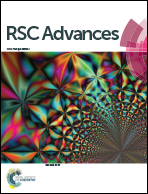Evaluation of the degree of chitosan deacetylation via induced-electrical properties
Abstract
The properties and functionalities of chitosan are closely related to its degree of deacetylation (DD). This study aimed to determine the DD of chitosans, which were of identical molecular weight, by a proposed electro-analytical system based on inductive methodology. Statistically significant differences in electrical parameters, including terminal voltage (U′S) and λ (the ratio of primary voltage to U′S) were observed among chitosans with different DDs. Both U′S and λ were linearly correlated with the DD value, regardless of frequency, suggesting that these electrical parameters can be used to determine the DD of chitosan. More chitosan's coils contributed to higher measurement accuracy, but the change in measurement position showed no improvement. The highest linear coefficient of determination (0.9941) between DD and U′S was obtained by the experimental transformer with 100-turn chitosan's coils at a primary voltage of 10 V and a frequency of 400 Hz. This study explored the potential of an innovative electro-analytical system to determine the DD of chitosan.



 Please wait while we load your content...
Please wait while we load your content...